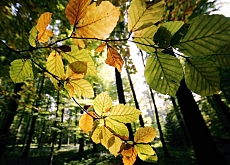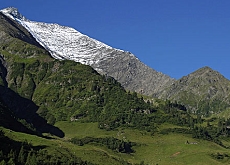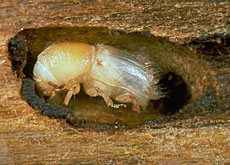Forestry Day highlights Swiss situation

On World Forestry Day, Switzerland can look back at some impressive achievements, but the Swiss timber industry is not looking as healthy as the forests.
Falling timber prices and increasing competition pose a challenge to the domestic forestry industry, which has to be propped up with subsidies.
In the 20th century the amount of forest cover in Switzerland almost doubled. Today if all the trees were felled they would yield 420 million cubic metres of wood, a European record.
“Switzerland is a model country with its forest regulation, which has obliged us for the past 100 years to keep the forest area stable,” Thomas Kolly, head of international affairs at the Federal Environment Office, told swissinfo.
About a quarter of the country’s forests is in private hands. The environment office says this complicates efforts to manage the forests efficiently but that private owners often pool their resources to ensure sustainable management.
The industry is worth SFr7 billion ($5.4 billion), providing employment to thousands. About 7,000 people work in forests, while a further 66,000 are employed to process the felled wood.
Falling prices
But while the forests themselves may be blooming, prospects for the timber industry are grim.
Since the 1990s, the sector has been in freefall because of falling wood prices and tougher overseas competition, especially from Austria.
The drop in price was felt across Europe but Switzerland suffered most, thanks to the rising price of transportation and production costs. The authorities also blame the fragmented ownership of the forests, where each private owner has an average of 1.3 hectares.
Since the mid-1990s, the government has been pumping subsidies into maintaining the country’s green heritage. The funds go towards ensuring the forests are protected and looked after.
Between 1995 and 1999, subsidies amounted to SFr163 million a year, which was increased to SFr234 million after Hurricane Lothar devastated vast tracts of forest in 1999.
Cost cutting
But the future of subsidies is looking ever more uncertain. In 2003, the government announced a series of cost-cutting measures across the board for public services and the forestry sector did not escape.
It can expect to be some SFr40 million out of pocket every year, with a loss of 800 jobs.
Whether this will have a detrimental effect on using trees to protect humans and their homes from natural disasters remains to be seen.
For some, trees are a cheap and effective way of limiting the fallouts of such tragedies.
Birgit Ottmer of the Swiss Federal Institute for Snow and Avalanche Research told swissinfo that avalanche barriers could not be built everywhere and were very expensive.
“Sometimes there are better alternatives. Where trees can grow, it’s better to have a forest. It’s natural, it’s a habitat, it looks nicer and it costs less,” she said.
swissinfo, Faryal Mirza
73% of Swiss forests are publicly owned; the remaining 27% is in the hands of 250,000 private owners.
A third of the country is covered in trees. In some areas, such as the Jura region, this goes up to 40%.
The forestry industry is worth SFr7 billion and employs more than 70,000 people.

In compliance with the JTI standards
More: SWI swissinfo.ch certified by the Journalism Trust Initiative



You can find an overview of ongoing debates with our journalists here . Please join us!
If you want to start a conversation about a topic raised in this article or want to report factual errors, email us at english@swissinfo.ch.